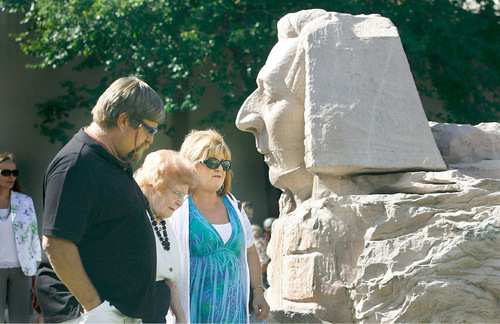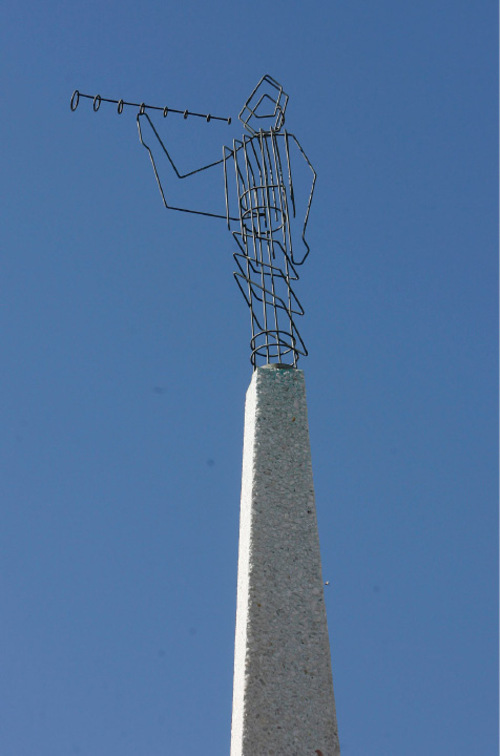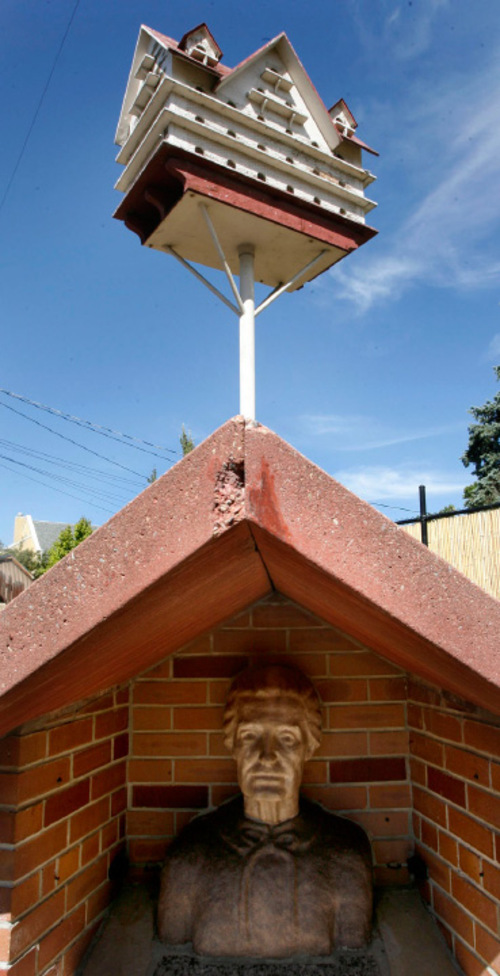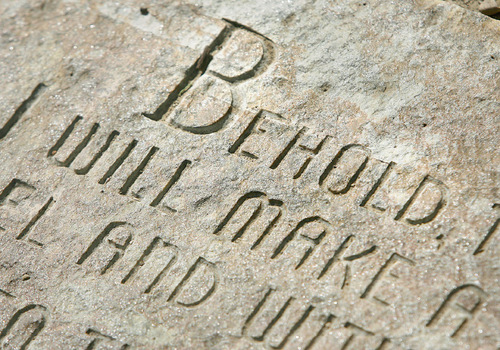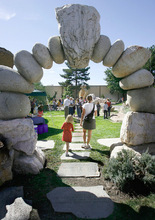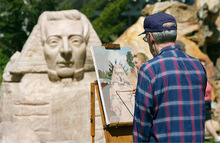This is an archived article that was published on sltrib.com in 2010, and information in the article may be outdated. It is provided only for personal research purposes and may not be reprinted.
A decade after it became a public park, Gilgal Garden is flourishing.
The stone sculptures in this art park, once in a state of disrepair, have been restored to their original condition and sit surrounded by a beautiful border garden. And the park's sculptures still inspire visitors to think about faith and ponder the mysteries of life.
"It's such a testament to one man's vision," said Cindy Cromer, who helped organize a Sunday celebration of the garden's 10th anniversary as a public park. The event included artists in action and an opportunity for children to create sculptures from modeling clay.
Gilgal Garden — named after the place outside of Jericho where ancient Israelites crossed the Jordan River in the Middle East — contains a dozen original sculptural arrangements with biblical themes and more than 70 engraved stones with quotes from hymns, scripture, poets, philosophers and religious leaders.
The artistic gem was created by stonemason and LDS Church Bishop Thomas Battersby Child Jr., with help from Utah sculptor Maurice Brooks, as a tribute to faith and the craft of masonry. The quartzite and granite sculptures date from 1945 until Child's death in 1963.
The best-known sculpture in the garden is an Egyptian sphinx with the face of LDS Church founder Joseph Smith. Another sculpture is Child's interpretation of an ancient sacrificial altar described by Smith, while another represents several verses from the Book of Ecclesiastes in the Bible.
A tribute to the masonry trade includes a figure of Child holding a Bible and blueprints. A monument to the LDS priesthood includes a wire sculpture of the Angel Moroni.
After Child's death, his widow sold the garden to neighbors because of the demanding upkeep. When the half-acre at 749 E. 500 South was later slated for sale for a condominium development, Friends of Gilgal Garden raised $600,000 to buy it and three adjacent homes, then donated the property in 2000 to Salt Lake City.
Donations came from The Church of Jesus Christ of Latter-day Saints, the George S. and Dolores Doré Eccles Foundation, Salt Lake County and many individual contributors.
Friends of Gilgal Garden serves as curator of the sculpture garden and continues to raise funds to restore and maintain it. The Salt Lake County Master Gardeners Association adopted the park as one of its community projects, creating and maintaining a lush border garden where overgrown weeds once grew.
Brian Jackson Fetzer, a member of the family that bought the property from Child's widow, said the transformation was "absolutely amazing."
David Sucec, one of the founders of Friends of Gilgal Garden, said Child's art is universal.
"This transcends the local culture," he said of the sculptures. "All good art transcends the local culture."
Gilgal Garden open almost every day
O The Salt Lake City art park contains sculptures and engraved stones that represent the faith and culture of stonemason Thomas B. Child Jr. and his sculptor friend, Maurice Brooks. The garden, at 749 E. 500 South, is open from 8 a.m. to 8 p.m. daily, April through September, and 9 a.m. to 5 p.m., October through March. It is closed Christmas, New Year's Day and Thanksgiving. The nonprofit Friends of Gilgal Garden works to preserve and enhance the garden. Tax-deductible donations can be sent to P.O. Box 58447, Salt Lake City, UT 84158-0447.
For more information • http://www.gilgalgarden.org.


